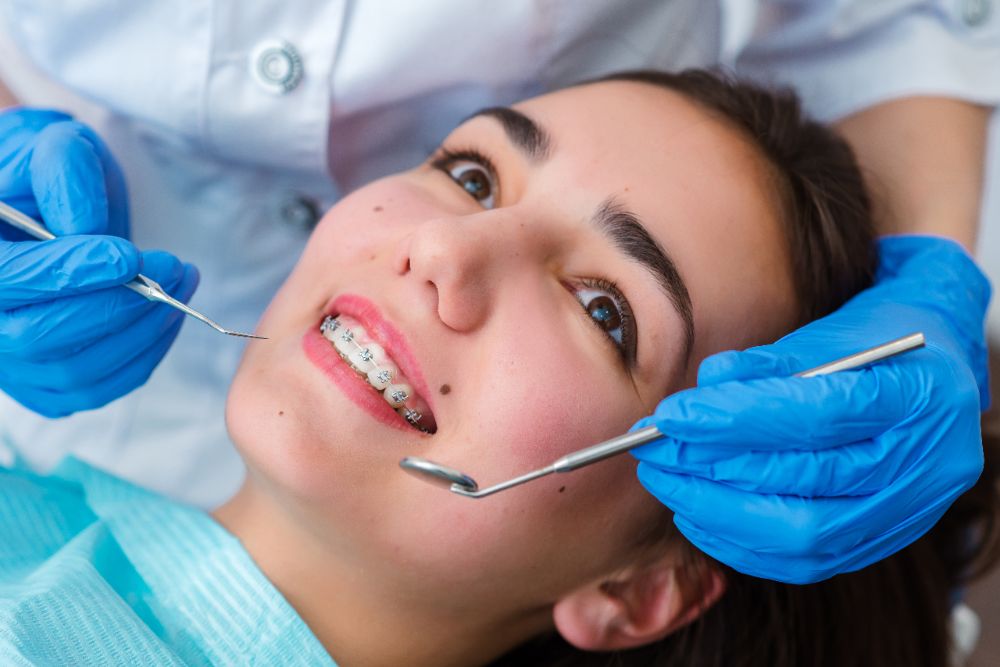What Sets Cumming Braces and Aligners Aside From Various Other Orthodontic Treatments
Comprehensive Overview to Orthodontics Procedures for Dealing With Dental Misalignments
In the realm of orthodontics, the journey to accomplishing a completely lined up smile involves a myriad of procedures customized to fix oral imbalances. From traditional dental braces to unseen aligners and also medical choices, the area of orthodontics provides a variety of services to deal with differing levels of oral irregularities. Understanding the details of each treatment, including their mechanisms, advantages, and possible downsides, is essential in making informed choices concerning one's orthodontic therapy. As we navigate with the comprehensive overview to orthodontic procedures for fixing oral imbalances, the elaborate information of each method will unravel, clarifying the path towards a harmonious and functional oral positioning.
Orthodontic Procedures Overview

Along with typical braces and clear aligners, orthodontists may additionally recommend various other treatments like headgear, palatal expanders, or retainers to address particular placement problems (orthodontist). These treatments are customized to each client's distinct demands and might involve a combination of treatments to attain the wanted results. Normal modifications and surveillance are critical parts of orthodontic therapy to guarantee progress is on track and to make any required alterations along the method. By undertaking orthodontic treatments, clients can not only achieve a straighter smile but also boost their general oral health and wellness and function.
Traditional Dental Braces: Just How They Work
When thinking about orthodontic therapies for dental misalignments, typical dental braces stand out as a time-tested technique for fixing teeth positioning. Traditional braces are composed of braces, cords, and bands that interact to use continual pressure on the teeth, gradually moving them right into the preferred positioning. The braces are affixed to the teeth making use of an unique adhesive, and the cables are threaded with the brackets. By readjusting the tension of the cords, orthodontists can regulate the instructions and force applied to each tooth, assisting them right into appropriate alignment with time.
As stress is used to the teeth via the dental braces, the bone surrounding the teeth is reshaped to support the brand-new tooth placements. Patients will need routine modifications at the orthodontist's workplace to ensure the braces continue to use the correct stress for efficient teeth movement.
Unnoticeable Aligners: Cons and pros
Unnoticeable aligners provide a discreet and practical option to conventional dental braces for correcting dental imbalances. These clear, customized trays are practically unnoticeable when used, making them an appealing choice for individuals looking for a more cosmetically pleasing orthodontic therapy. One of the main advantages of unseen aligners is their removability, permitting for less complicated maintenance of oral hygiene contrasted to typical dental braces. Individuals can get rid of the aligners prior to consuming or brushing their teeth, minimizing the risk of food obtaining embeded the home appliance and streamlining the cleaning process.

Surgical Orthodontic Options
Surgical interventions in orthodontics present practical choices for addressing complicated oral misalignments that might not be effectively dealt with through standard orthodontic therapies. While unnoticeable aligners and standard braces can remedy numerous orthodontic issues, specific instances call for medical intervention to accomplish ideal results. Surgical orthodontic alternatives are usually recommended for severe malocclusions, substantial jaw inconsistencies, and instances where the underlying bone structure requires modification to attain proper placement.
One common medical orthodontic treatment is orthognathic surgery, which includes rearranging the jaws to deal a knockout post with practical concerns such as problem eating or speaking. This surgical treatment is frequently done in cooperation with an orthodontist who helps line up the teeth prior to and after the procedure. Surgical orthodontics may also include procedures to expose affected teeth, eliminate excess periodontal cells, or reshape the jawbone to develop an extra harmonious face profile.
Prior to taking into consideration surgical orthodontic choices, patients undertake an extensive evaluation to establish the requirement and potential advantages of such interventions. cumming invisalign. While surgical treatment may appear challenging, it can dramatically improve both the function and looks of the smile in cases where conventional orthodontic treatments drop short
Retainers and Post-Treatment Treatment

Post-treatment care entails following the orthodontist's guidelines vigilantly. This might include proper oral health techniques, participating in follow-up appointments, and putting on the retainers as recommended. Failure to follow post-treatment treatment instructions can lead to relapse, where the teeth slowly return in the direction of their original positions. Constant retainer wear, excellent dental health, and regular dental examinations are vital for preserving the results attained through orthodontic surgery and ensuring the lasting stability of the corrected dental positioning.
Verdict
In final thought, orthodontic procedures offer different alternatives for correcting dental misalignments. Traditional dental braces utilize steel brackets and cables to change teeth right into appropriate placement. Unseen aligners give an even more discreet choice however might not appropriate for all situations. Surgical orthodontic alternatives are readily available for a lot more severe misalignments. Retainers are frequently utilized post-treatment to maintain the new placement. On the whole, orthodontic treatments can resource efficiently improve dental health and aesthetic look.
As we navigate with the comprehensive overview to orthodontic treatments for dealing with dental misalignments, the intricate information of each approach will unravel, dropping light on the course towards a unified More about the author and practical dental alignment. - aligners
One of the most common orthodontic therapies is the use of dental braces, which are composed of metal braces and wires that use gentle stress to gradually shift teeth right into the wanted placement.When thinking about orthodontic therapies for dental imbalances, traditional dental braces stand out as a tried and true technique for correcting teeth positioning. Furthermore, undetectable aligners may not be appropriate for complex orthodontic issues that need even more significant teeth motion, as they are normally recommended for mild to moderate situations. Retainers are tailor-made orthodontic devices designed to hold teeth in their dealt with positions after the conclusion of orthodontic therapy.